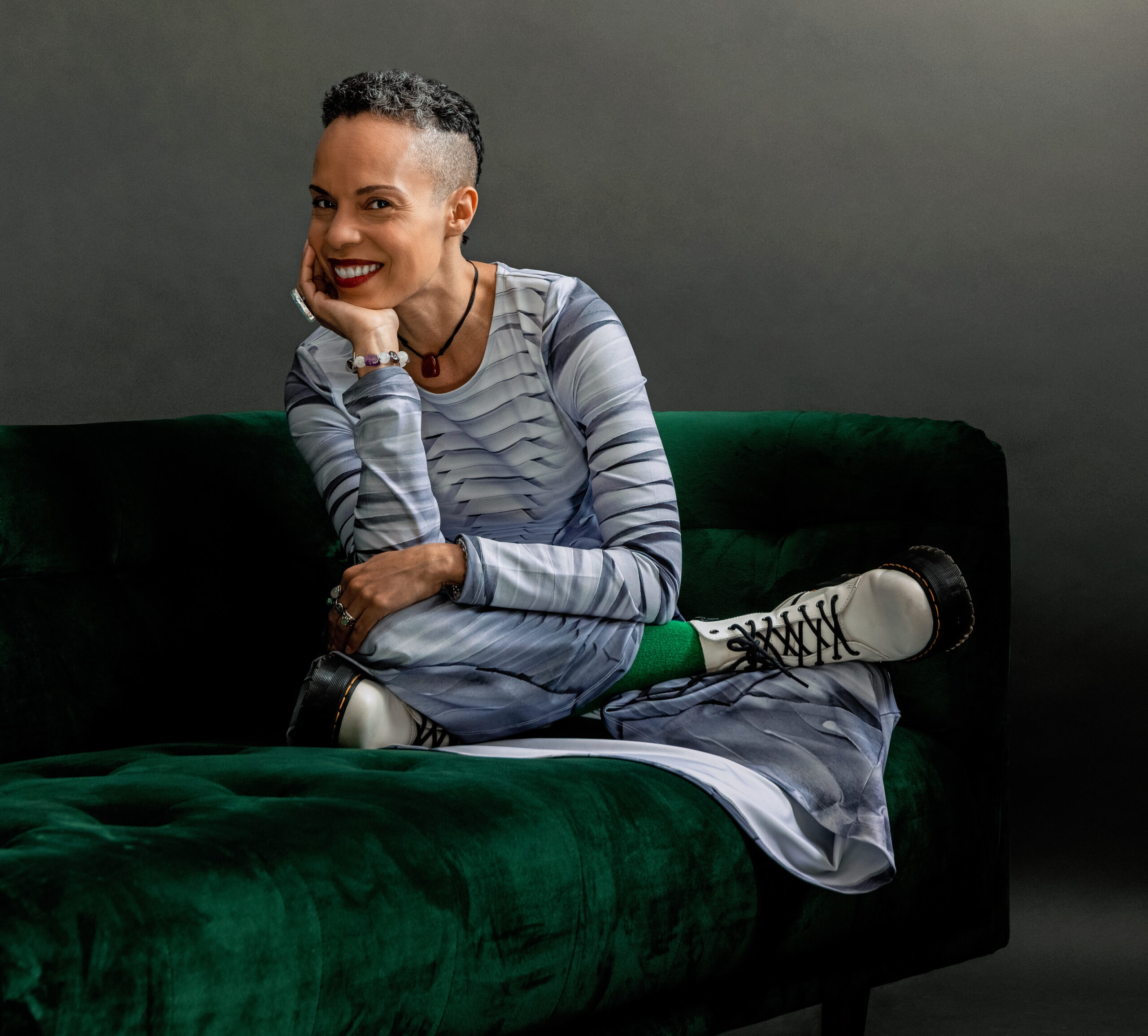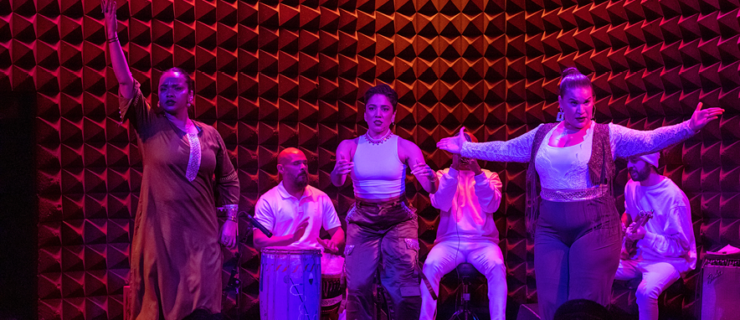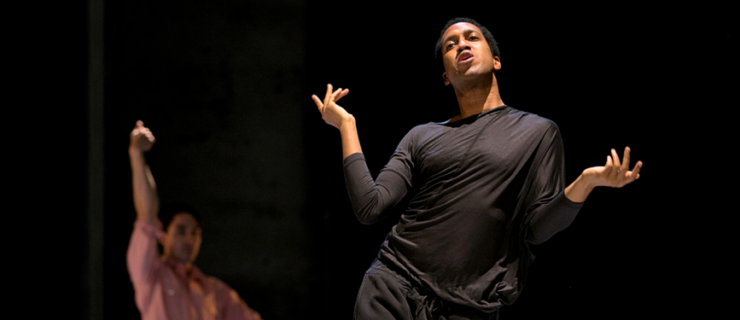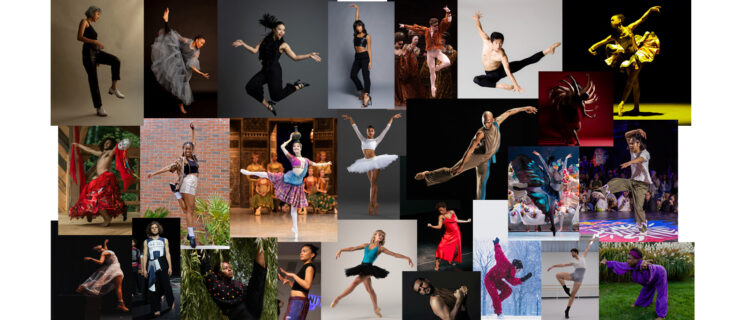Tai Jimenez on Leading the DTH School
Tai Jimenez spent 12 years as a principal dancer with Dance Theatre of Harlem. She joined the company at age 17 and later became a principal dancer with Boston Ballet in 2006 and has been a guest artist with New York City Ballet, among other companies. Jimenez, who has been chosen to lead the DTH School when its current director, Robert Garland, becomes the company’s artistic director, discussed her background, her journey in classical ballet, and her vision and hopes for the school.
How did you get started in dance?
I arrived here on the earth in Rochdale Village, Queens. My mom says that I just never stopped dancing. I wound up in a little local neighborhood school where all of my other little girlfriends from Rochdale Village went, run by Joan Millen Mesh, who I believe was a graduate of Juilliard—and she was a Black woman.
Miss Joan had a group of advanced dancers who were quite accomplished. When I was 9 years old, my mother got a call from Miss Joan, who wanted me to start taking class with the advanced dancers. I was this little kid and they were teenagers, so I became, like, the mascot. Miss Joan told my mother about the School of American Ballet. I went to SAB for four years.
How was that transition?
I went from being in a predominantly Black environment to being in a predominantly white environment. This was 1987. I had heard that ballet was a European art form; my own exposure to it, though, had been with Black people. Even when I got there and social issues started to happen—I didn’t understand. I didn’t have the language to express what I was feeling.
When my mother said, “You can give up,” it wasn’t what I wanted to hear. One day she said, “You are going to have to be so good that they can’t help but look at you.” And that was the end of the discussion.
How was your experience at SAB?
After not getting cast in Nutcracker and knowing in my head that I had the potential to be Marie, it hit me that they didn’t see me the way they saw everyone else. It was a shattering experience. I was 10 at the time.
I had also taken classes at Ailey, and my mother had maintained a communication with Denise Jefferson, who ran The Ailey School. She told my mother about Madame Gabriela Darvash, a Romanian immigrant who had trained at the Kirov Ballet. At 14, I left SAB and went to train with Madame, as we called her. The studio was very Black-friendly. There were all kinds of people at her studio.
Under Madame’s guidance, I could let go of that constant self-awareness. She would force me to stand in the front of the classroom. And it was after SAB—where it was the opposite. I had already been through hell. I was grateful for Madame’s attention and her tough love, and I could see that she was extremely intelligent.
What brought you to Dance Theatre of Harlem?
While I was still at LaGuardia High School, I auditioned for Dance Theatre of Harlem, when they still had a second company. I actually met Robert Garland for the first time at Madame Darvash’s. Then we both found ourselves at Dance Theatre of Harlem. He said to me once, “Nobody gives a damn about watching you dance. They want to see themselves through you.” It was one of the best pieces of advice I ever got—that, to a certain extent, you have to get out of the way in order to dance.
After 12 years touring with DTH, in 2006 you joined Boston Ballet. What was dancing for that company like?
I got into the company and I realized the gift of the context that Mr. Mitchell had created. Boston Ballet is an extraordinary company. But there wasn’t a common ethos that bound us together. Mr. Mitchell constantly said you are in service to something much larger than yourself, impressing upon us that people were looking up to us, and that we were role models setting an example for future generations. Other places weren’t necessarily driven by that. It all seemed so small to me.
Can you share your vision for the school as an extension of Arthur Mitchell’s legacy and your role in it?
I think about Mr. Mitchell every day and what he achieved. I’ve had a lifetime in dance because of the opportunities that he provided. He inspired so many, to be in this position feels like a huge honor.
He created a family. And I hope to as well. When I go back to that building it is like rejoining a part of my family… my dance family. I want to preserve Mr. Mitchell’s vision of providing a space for Black and brown dancers to thrive. But, just as was always the legacy of DTH, it has to be everybody. Like a lot of Black families, we have people of every color and shade.
Inclusivity is about making everyone feel seen and valued, not just for being a dancer but for being a person. Not everybody is going to be a professional dancer, but everybody can benefit from it. Dancing is its own reward.
I definitely want to reopen the pathway to a professional career. We don’t have a professional training program anymore, and we don’t have a second company. I also want to help people reconnect to their own capacity to heal, their own capacity to feel joy, because I want to inspire beauty and creativity.




